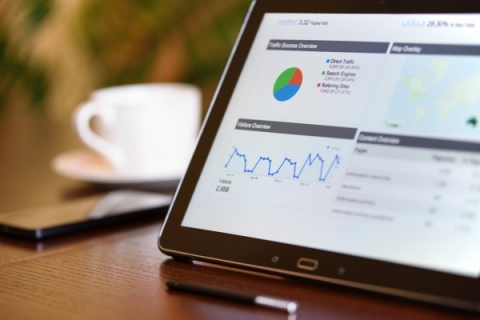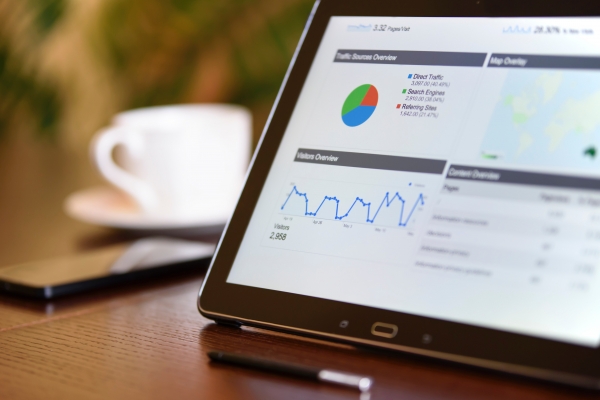Wondering how you can track your marketplace success? That’s where marketplace metrics are your best friend.
You see, your business metrics can give invaluable insights to help you scale your business as fast as possible.
Today, you will learn exactly how to measure your marketplace KPIs so that you can grow a successful marketplace. Ready to learn more? Let’s go.

Source: Pexels
Basic business metrics to track your marketplace success
You know how it is: A marketplace business is a great business model. Often, the marketplace model disrupts existing markets in ways that mean lower prices and more choice for consumers.
You as the entrepreneur can build a strong marketplace. Once you have the network effect on your side (your marketplace offers the most value compared to other options), you have a competitive advantage and a lot of room to scale.
That’s not to say that building a marketplace is easy. To succeed, you need to keep a close eye at key metrics. For example, establish a folder on your computer and share it with all key decision-makers.
Now, commit to tracking your numbers every month. On the last day of the month, you fill in your spreadsheets. Soon enough, you’ll have enough data to see how your marketplace is doing (and how you can improve it).
Here are the key metrics you should track:
Gross Merchandise Value (GMV)
Your marketplace’s Gross Merchandise Value (GMV) measures the value of goods and services sold on your marketplace platform.
You can calculate your GMV by multiplying the number of transactions on your marketplace with the average order value (AOV). For your GMV to be as accurate as possible, you need to calculate it after cancelations and returns. For service marketplaces, you should calculate delivered services rather than bookings.
Take Rate
Your marketplace’s take rate is the net revenue that you get from your commissions and fees (or another pricing model). Marketplaces have wildly different commissions, fees, and pricing structures (as we talk more about in this guide on pricing strategy), so this will depend on the strategy you use.
For example, the freelance platform Upwork charges 5-20%, whereas the marketplace for handcrafted products, Etsy, charges 5%.
The commission you can charge depends on how much value you offer, your competition, as well as the products or services your marketplace offers.
Gross Margin
Your GMV and Take Rate metrics give an indication of how healthy your marketplace business is. But even if these numbers look great on paper, they don’t necessarily show the whole truth. It all depends on your gross margin.
Your marketplace Gross Margin is calculated by subtracting the cost of products or services sold from your net revenue. To get a more accurate number, you can subtract other costs (like marketing, payment, and customer service costs) from your net revenue.
Once you’ve calculated this number, you’ll know if costs like your user acquisition costs are too high. This will help you make informed decisions about your marketplace.
Average Order Value (AOV)
Your Average Order Value (AOV) shows how your users spend on your platform. This metric helps you create a sustainable business model for your marketplace.
Liquidity
I saved the best for last. You see, the liquidity of your marketplace is one of the most important online marketplace metrics. Liquidity shows the rate of products or services on your marketplace that get sold and booked within a specific period of time or how demand and supply work on your marketplace.
A high percentage of sales within a short period of time indicates that sellers are earning money on your platform and buyers are happy with the value that sellers provide.
User metrics
Your business metrics are important for tracking the health of your marketplace and making iterations to your strategy, if needed.
But your marketplace wouldn’t get far without its users. That’s why you need to keep track of marketplace user metrics
Seller metrics
Sellers and buyers are equally important to your marketplace. That’s why you’ll want to track both. To track seller metrics, keep track of the number of sellers and their growth rate, the number of listings and their growth rate, as well as the average listing price.
This will help you make informed decisions about your cost per acquisition (CPA), as well as profit projections.
Buyer metrics
To track buyer metrics, look at things like: How many buyers do you have and what’s the growth rate? What’s the average number of orders and amount purchased by each buyer? What’s each buyer’s average order growth?
Once you know your seller AND buyer metrics, you can make better decisions about which side you want to grow more (to get a good balance between sellers and buyers).
Cost Per Acquisition (CPA)
Your Cost Per Acquisition (CPA) is one of your most important numbers. After all, it’s the number that determines the viability of your business. You should track your CPA for both your sellers and buyers.
The acquisition cost includes your marketing and sales expenses. If our CPA increases too much, you risk running a marketplace that’s not profitable enough as a business. That’s why you need to track ALL your spending (staff costs included) to adjust your marketing efforts if you end up overspending.
Net Promoter Score (NPS)
Your Net Promoter Score (NPS) is a metric that shows you how likely your customers are to recommend your business to their network. If that score is high (up to 10), you have a good NPS. If, on the other hand, your NPS is as low as 1, you won’t get much word-of-mouth marketing.
So:
9-10: Promoters or loyal customers who are happy to recommend your brand.
7-8: Passives or satisfied customers who aren’t enthusiastic.
0-6: Detractors or customers who are dissatisfied and will have a negative impact on your brand.
You calculate your NPS by deducting the number of detractors from the number of promoters to get a score between -100 or +100. An NPS that is higher than 0 is good and a score above +50 is great.
Life-Time Value (LTV)
The Life-Time Value (LTV) of your users is another important marketplace startup metric. LTV is usually calculated on a 1-to-3 year basis and points to the revenue you expect to get from every user. Your LTV needs to be higher than your acquisition costs, CPA.
How do you calculate your LTV? First, you need to figure out the average amount of repeat purchases per customer on your marketplace.
Then, by dividing your Gross Merchandise Value, so the value of goods or services sold on your platform, by the number of transactions per month, you get an average order value. Now, multiply this with the average amount of repeat purchases and you have your LTV.
(GMV / # of transactions) x average # of repeat purchases
Marketplace website KPIs
By using a free tool like Google Analytics, you can quickly get an overview of how your website visitors are interacting with your business. Getting these insights is crucial because you see in a concrete way where there’s room for improvement.
The metrics you should look at are: The number of monthly users, time on site, and bounce rate.
Monthly users
How many monthly unique users does your marketplace website attract? If this number is stagnating, your growth is starting to slow and you’ll want to look at marketing strategies to get it to pick up again.
Time on site
The time your visitors spend on your site is an indicator of how engaging your site is. Are they leaving after less than a minute? You’ll need to investigate if something is going on with your listings (for example, are they not matching market demand?).
Bounce rate
Your site’s bounce rate shows how many visitors don’t engage at all on your marketplace. If the bounce rate is high, it means that people are coming to your site and leaving without checking out any other pages.
Advanced marketplace metrics: How big-name marketplaces track their metrics
Wondering how big marketplace businesses like Uber or Airbnb track their metrics?
While both companies started where you are today (tracking GMVs and CPAs), they use advanced data analytics to make decisions about their metrics today.
Take Uber. According to the company’s blog, Uber’s marketplace metrics show exactly how it forecasts and distributes drivers to areas before the need arises to optimize orders and revenue.
The same goes for Airbnb. Airbnb uses key metrics to determine things like host preference. That way, the company improves the user experience for both hosts and guests (which, in turn, affects things like the cost per acquisition and lifetime value).
While your marketplace probably isn’t at the billion-dollar mark just yet, it’s helpful to see how important it is to track metrics. Start with the core numbers and scale your efforts once your marketplace starts picking up.
Want to build the best marketplace platform?
There you have it! Now you know how to measure your marketplace metrics and how to use them to create a successful marketplace. What it comes down to is running through your numbers to see where your marketplace is today. To create a sustainable and converting strategy, this is a must.
Want to create the best marketplace platform? At Kreezalid, we have years of experience helping marketplaces get started and scale. We’ve taken that experience and created the ultimate marketplace website builder. Try it now (the next 14 days are free!).
